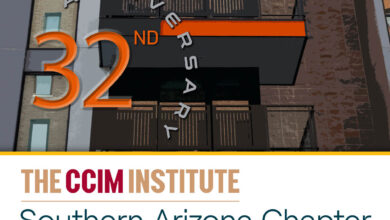
11. Optics Valley
By Rodney Campbell
Southern Arizona is proud to be known as Optics Valley. The nickname, which was introduced in a 1992 BusinessWeek article, was bestowed on the Tucson region when it became clear that optics-related companies were hustling to plant their flags in our community.
The reason? Not surprisingly, one of the drawing cards was the University of Arizona’s commitment to optical sciences. The National Science Foundation ranked the university first in astronomy and astrophysics for the fiscal year 2020, with expenditures of $122 million.
The UA’s Wyant College of Optical Sciences educates more students than any other U.S. optics institution. The college is named for the brilliant and entrepreneurial James C. Wyant, the founding dean who passed away this past December. A noted business leader and philanthropist, Wyant gave more than $30 million to the college to support graduate students and endowed faculty.
As it turns out, Optics Valley isn’t our little secret. Leading companies from across the spectrum come to Tucson to recruit students from the college.
“Jobs are exploding,” Wyant College Dean Thomas Koch told BizTucson in 2022. “Companies come to talk to faculty, and students present research and form relationships with companies before they even graduate. A field you would think of for jobs in optics is aerospace, but now there’s Facebook, Apple, Microsoft, Amazon – they all involve optics.”
Making a further commitment to optical sciences among other emerging fields, the University of Arizona’s Tech Park was established in 1994. One of the nation’s premier research parks, it creates an environment that generates, attracts and retains technology companies and talent that align with the research, mission and goals of the university.
UA Tech Park’s development and continuing success are crucial steps in fortifying Southern Arizona as the place where optical sciences thrive.
“Tucson is an optics epicenter established at the intersection of university expertise and industry excellence,” said Carol Stewart, UArizona VP for Tech Parks Arizona. “Tucson’s optics industry fuels revolutionary advancements on a global scale. With decades of credibility as a world leader in optics/photonics, the UArizona Wyant College of Optical Sciences generates a rich talent pool and innovative startups. This magnetic force not only attracts businesses but also catalyzes growth and success of the industry generated from the robust ecosystem.”
Plenty of things are happening in the optics field at Tech Parks, including:
- Micro-Hybrid Electronic GmbH recently opened an office there. Founded in Germany in 1992, the company operates in the field of electronic microsystems and infrared measurement technology, with five other locations worldwide. It specializes in miniaturized, ceramic-based electronic circuits and infrared sensors.
- Applied Energetics, Inc., a leader in the advancement of ultrashort pulse laser technologies, has announced plans for the expansion of its headquarters with an approximately 8,300-square-foot facility located in its building. The commitment is expected to support the company’s anticipated growth and provide greater capacity for research, product development, training, testing, evaluation and production.
- The Tech Parks’ roots go deep. NP Photonics, a company developed from UArizona research, was among the first businesses to set up shop at the park. The company is still going strong, boasting a leading proprietary fiber technology used across a broad family of products, including narrow linewidth, low phase-noise fiber lasers designed for operation in industrial environments.
A steady stream of gifted UArizona optical sciences graduates coupled with a business incubator like UA Tech Park are the perfect combo. The park’s occupants help keep talent in Tucson, giving them an option to stay in the region instead of relocating.
“One of the premises of the university is optics,” Stewart told BizTucson in 2022. “We concentrate on educating students and providing practical experience. The professors and researchers are working on projects that are ready to be commercialized, and students get hands-on experience.”
Another key player in the industry is the Arizona Technology Council, the state’s top trade association for science and technology companies. Council members work toward furthering the advancement of technology in Arizona through leadership, education, legislation and social action.
The council holds events, educational forums and business conferences that bring together leaders, managers and employees to make an impact on the technology industry. The group’s work contributes to its culture of growing member businesses and transforming technology in the state. The council’s Southern Arizona regional office has more than 100 members.
As reported in a recent issue of BizTucson, the Arizona Technology Council’s work over the past five years has been made possible through funding from the Small Business Administration Regional Innovation Cluster. The partnership led to an initiative that helped revive an optics technician training program at Pima Community College.
With eager participation from the public and private sectors, things are looking sunnier than ever in Optics Valley more than 30 years after the rest of the nation began taking notice.






